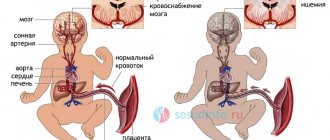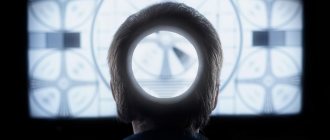Why is stress dangerous?
Stress can disrupt the smooth life of a person of any age, social status and financial situation. Any changes in the usual way of life - both negative and positive - can cause a strong shock. Getting married, for example, can lead to no less stress than illness of a loved one, divorce, loss of a job, moving to another city or even to a new apartment.
Prolonged stress (for example, from constant overwork and excessive responsibility at work, family problems) is usually called “pre-disease”: if left untreated, it will certainly develop into serious health problems and can also lead to death.
The fact is that as emotional stress increases, a person’s adequacy of perception of reality sharply decreases. Thus, stress suppresses a person’s ability to find a way out of a difficult situation. As an analysis of various cases of death in extreme situations shows, most of them simply could not find their only chance to survive.
“ BFB ” is a method of therapy that uses the body’s hidden reserves. The purpose of the method is to develop a person’s self-regulation skills. In our clinic, treatment of neurological and many other diseases using biofeedback therapy is carried out by a highly qualified doctor - neurologist, neurophysiologist with many years of experience . With the help of training under the guidance of a competent specialist, patients will learn to relax, cope with fears, depression and fatigue.
Duration of therapy
One procedure lasts up to half an hour or a little more, and the presence of an experienced instructor is required throughout this time.
The course consists of 10-20 procedures, 2-3 sessions per week are recommended. This is the optimal time to learn how to fight negative thoughts and overcome them on your own, start breathing correctly and be able to relax at the neuromuscular level.
The skills of self-regulation of the body can be acquired during the treatment course, and in the future they will be preserved for a long time. This helps restore performance, maintain well-being and confidence.
The essence of the method
Biofeedback therapy clearly demonstrates to us how we can use our consciousness to directly control our own body by analyzing signals from the nervous system.
Externally, the procedure differs little from REG and EEG studies. The biofeedback-EEG training technique includes taking an electroencephalogram, which registers the main rhythms of the brain (alpha, beta, delta, tetarhythms). An EEG (electroencephalogram) assessment is carried out by an experienced neurologist-neurophysiologist, and a conclusion is given about the characteristics of brain rhythms and the distribution of biopotentials in various areas of the cerebral cortex. Depending on the indications, the necessary course of biofeedback-EEG training is selected (relaxing, activating, etc.).
During sessions, several electrodes are installed on problem (“trained”) areas on the surface of the head. Through a special device, the rhythms of certain areas of the brain influence video and audio signals, i.e. the patient can monitor the state of his own brain using sounds and images.
Essentially, this is treatment and training in one procedure, as a result of which the patient will learn to cope with stress, phobias, headaches and other psychosomatic manifestations.
The method allows you to optimize the normal physiological functions of the body and correct impaired ones in a natural, drug-free way. A prerequisite for biofeedback therapy is the patient’s motivation to achieve results. Thus, the use of Biofeedback transforms the patient from an object of medical intervention into an active and interested participant in the treatment process.
The duration of one session is 20 – 30 minutes. However, to achieve control and consolidate these skills, a fairly large number of sessions are required, on average 20 – 30. At the end of biofeedback-EEG training, the patient acquires the skills to control the state of his own brain, which allows him to use the body’s reserves with high efficiency.
Biofeedback therapy is getting rid of stress, psychosomatic disorders and negative emotions, gaining self-confidence, improving the quality of life without the help of drugs !
Historical and scientific aspect
The study of biofeedback (BFB) is rooted in the teachings of I. P. Pavlov about conditioned reflexes and the regulatory role of the cortex. This scientific direction arose at the very beginning of the 20th century at the Institute of Experimental Medicine (St. Petersburg).
Developing these ideas, P.K. Anokhin showed that the principle of feedback plays a decisive role in regulating both higher adaptive reactions of a person and his internal environment. Norbert Wiener defined “feedback” as a method of regulation based on the continuous receipt of new information about the functioning of the system (cited by S. Diamond, 1983). Active study of the method began in the late 50s of the 20th century, when Pavlov’s students, both in Russia and in America, developed a new direction in physiology - the doctrine of instrumental conditioned reflexes.
The greatest contribution to its development was made by:
- studies by Miller NE, DiCara LV (1968) on the development of visceral conditioned reflexes of the operant type in animals;
- studies by Sterman MB (1980) on an increase in the thresholds of convulsive readiness after a conditioned reflex increase in the sensorimotor rhythm in the central gyrus of the cerebral cortex of both animals and humans;
- discovery by Kamiya J. (1968) of the ability of subjects to voluntarily change the parameters of their electroencephalogram (EEG) in the presence of feedback with information about their current values.
It should be noted that Russian experience in the field of biofeedback has been successfully tested in the USA, Spain, Israel and Switzerland, but in Russia it is still something exotic. However, in our country there is already convincing evidence of the high effectiveness of the biofeedback method in the treatment of various diseases (and this list includes such serious illnesses as hypertension, Raynaud's syndrome, migraine, peptic ulcer, alcoholism and drug addiction).
The most important advantage of the method of biological self-government is that in it the patient turns from a passive object of medical intervention into an active subject who determines his own recovery.
Scope of application of biofeedback therapy
The scope of application of the method can be conditionally divided into 2 large areas – clinical and non-clinical.
Clinical area
Biofeedback therapy is used for the treatment and prevention of many chronic diseases:
- hypertonic disease;
- increased blood pressure, vegetative-vascular dystonia;
- tension headaches, migraines;
- attention disorder and hyperactivity disorder in children and adolescents;
- nocturnal and daytime enuresis;
- shortness of breath syndrome, bronchial asthma;
- chronic stress;
- anxiety, fears and insomnia;
- psychosis, neurosis, neurasthenia;
- depression;
- stuttering;
- “chronic fatigue syndrome”, etc.
In the last few years, this list has been constantly expanding; biofeedback has been effectively used in the complex treatment of diabetes mellitus type I and II, irritable bowel syndrome , peptic ulcer, psychogenic erectile dysfunction, premenstrual syndrome, Raynaud's disease, Tourette's syndrome, multiple sclerosis, chronic pain syndromes, as well as for various postoperative disorders, in rehabilitation after a stroke, etc. In addition, biofeedback, the purpose of which is to prevent and stop the development of the disease, is one of the most promising methods of preventive medicine. The use of biofeedback methods at the “pre-disease” stage helps to stop or stabilize pathological development.
Non-clinical area
Biofeedback technology is successfully used in the pedagogical field to develop creative abilities and increase the effectiveness of learning, as well as in stress management (for example, to increase motivation and improve results in sports, art, etc.).
Also, the technique is indispensable for correcting the so-called. “borderline states” that arose against the background of chronic stress.
Biofeedback therapy sessions are perfectly combined with breathing exercises, trance techniques, auto-training, hypnosis, meditation, yoga, psychotherapy, etc.
At MedicCity, biofeedback technology is actively being introduced into the complex treatment of chronic diseases of the neurological, cardiological, gastroenterological, urological profiles, as well as in rehabilitation and preventive medicine.
Biofeedback therapy significantly improves a person’s standard of living. After the biofeedback course, your performance will increase, you will be able to do your work with less effort and with better results. Your resistance to stress will increase, balance will appear, relationships in the family and in the team will improve.
The use of biofeedback technology in the work of a speech therapist as a means of speech correction
Yulia Maslakova
The use of biofeedback technology in the work of a speech therapist as a means of speech correction
Practitioners and speech therapists, when correcting speech speech stereotype has formed, pursue the following goals:
Destroy the old speech .
Form a new speech that must correspond to the norm.
Biofeedback is a new non-drug method of treatment and correction , which is used today in speech therapy . The feedback principle helps to obtain information about muscle tone, body temperature, and pulse.
The procedure involves connecting electrical sensors (at all stages), which display information in the form of audio or video signals on the computer screen.
Biofeedback therapy can be used:
in working with children with different diagnoses at the initial stages of work on developing speech breathing .
during the formation of speech in children with hearing impairments (indispensable for relieving their tension from the muscles that are involved in speech formation, staging speech breathing, working on the coherence of pronunciation, and the tempo of speech ).
for the treatment of patients with various speech (dysarthria, rhinolalia, stuttering)
.
Biofeedback helps improve memory and promotes better concentration.
Contraindications to the use of the biofeedback method.
gross intellectual impairment;
mental illness;
the presence of convulsive brain activity;
severe organic brain damage;
severe somatic diseases.
In life, we constantly encounter the principle of feedback, often without thinking about it. We can give a simple example of how the feedback principle affects the body's reaction. Let's imagine a young athlete just starting to learn how to accurately shoot a basketball hoop. If after throwing the ball hits the hoop, then through feedback he receives information about what kind of motor activity brings the desired result. On the contrary, with an inaccurate throw, a basketball player sees the need to change the movement of his hands to correct the movement of the ball . If an athlete is blindfolded so as not to see where the basketball hoop is, he will never be able to learn how to hit it accurately. Seeing the ring and the result of the throw is the visual feedback necessary for the correct execution of movements .
course consists of 5 stages :
Stage 1 - diagnostic (2-3 lessons)
;
Purpose: Examination of a child to establish a diagnosis and draw up an individual scheme for a treatment and correction course using the biofeedback method .
Tasks:
taking anamnesis;
assessment of general condition at the time of examination;
assessment of speech ;
planning individual lessons.
All examination results are entered into an individual card available in the program, from where they can be printed.
The software allows you to record speech during the control examination and provides the specialist and the child with the opportunity to listen to and evaluate the recorded speech .
Diagnostic programs can be used throughout the course and make it possible to analyze the dynamics in the child’s condition as a result of classes.
Stage 2 - preparatory (5-7 lessons)
.
Goal: To prepare the child for mastering speech skills using the biofeedback method .
Tasks:
familiarize the child with the biofeedback method and signals;
limit psycho-emotional and speech stress to a minimum;
reduce stress, anxiety, excessive muscle tension, neurotic manifestations.
develop the skill of diaphragmatic relaxation breathing using the heart rate method - BFB;
develop the skill of self-control in the child over the respiratory movements of the chest and diaphragm;
consolidate the skill of smooth, long exhalation;
teach the child to voluntarily relax the muscles of the body, including the muscles involved in the speech process.
It is especially important to relieve excess tension from the muscles involved in speech formation, as this contributes to better coordination and plasticity when learning the skills of correct articulation, sound pronunciation and soft vocal delivery.
The use of diaphragmatic-relaxation breathing for speech correction is based on the techniques used by speech and voice specialists when establishing breathing.
It is known that all traditional methods in practical work with voice and speech widely use diaphragmatic breathing when activating the abdominal muscles, which eliminates tension and perfectly coordinates the work of breathing with the muscles involved in the process of speech and voice production .
A biofeedback specialist explains that while breathing, the muscles of the face, neck, shoulders, and arms should be relaxed. The inhalation should be done through the nose, lightly, not very deep, and the exhalation should be smooth through the mouth, several times longer than the inhalation.
During the feedback session, pictures or video files are shown. If the child is relaxed and breathing correctly (diaphragmically), then the picture or video is clearly visible. If the child is unconcentrated, distracted, tense, or breathing incorrectly, then the picture is not shown clearly, blurry.
During the exhalation phase, excess muscle and psycho-emotional tension is relieved. The muscles of the arms, upper shoulder girdle, torso, and especially the muscles involved in speech production relax, and their blood supply improves.
The more comfortable the child feels, the better he does the exercise.
Correct execution of the exercise develops the skill of diaphragmatic relaxation breathing and creates positive motivation in the child for further work .
If a child has difficulty completing a task, you can always return to previous exercises that will restore the skill.
Stage 3 - work on the main components of speech (4-5 lessons)
Goal: Development of the main components of speech using the biofeedback method .
Tasks:
Teach the basic rules of speech diaphragmatic-relaxation type of breathing (calm inhalation before speaking, speech only as you exhale)
;
master a soft voice;
form correct articulation;
connect speech hearing.
At this stage, it is important to develop a relationship between correct articulation and the exhalation phase (synchronize breathing and the work of the muscles of the speech organs )
.
Usually work begins with preparatory exercises (modeled on a speech therapist in front of a mirror )
.
Then the articulation of vowels is trained, first silently in front of a mirror, and then without it, only on the basis of muscle sensations. For this, a device is used , the electrodes from which are attached to the external muscles involved in speech production and articulation.
Stage 4 - developing the skills of smooth, continuous speech (10-12 lessons)
Goal: to develop the skill of continuous, smooth speech while exhaling
Tasks:
Familiarize the child with the prosodic components of speech : tempo, rhythm, intonation coloring, expressiveness, and develop them in him during classes;
master grammatical stress in a word and logical stress in a phrase;
to develop the skill of continuous pronunciation of speech material while exhaling under the control of biofeedback.
At this stage, the concept of the differences between grammatical stress in a word and logical stress in a phrase is given.
First, short phrases of 2 are practiced, then 3 or more on one exhalation. Fluency of speech , tempo, and emotional coloring are trained.
From separate words we move on to reading texts, songs, poems from the computer screen, under the control of biofeedback.
Stage 5 - consolidation of acquired skills and summing up the results of treatment and correction work using the biofeedback method (5-6 lessons)
.
Tasks:
conduct functional training in the form of game situations;
summarize the course;
give recommendations for the future.
At this stage, work to consolidate the acquired skills and apply them in the environment . The results are summed up and recommendations are given.
As a result, through repeated repetition, that is, through training, a new function control program is formed and consolidated in the central nervous system, which ensures stable reproduction of the required skill. Thus, the biofeedback method makes it possible to achieve improvement and correction of body function parameters in the required direction.
The duration of the main course of treatment for patients with voice and speech disorders is 25-30 sessions .
The technique can be recommended for preschool children from 5 years of age, school age, as well as adolescents and adults.
Bibliography
1. Adaptive self-regulation of functions // Ed. N. N. Vasilevsky - M., Medicine 1977, 327 p.
2.Biofeedback: Neuromotor training in the clinic and sports. Collection of scientific papers, issue 1. St. Petersburg: Biosvyaz, 1991, 190 p.
3. Breslov I. S. How human breathing is controlled. L., Nauka, 1985, 160 p.
4. Isaev G. G. Physiology of respiration. St. Petersburg, Nauka, 1994
5. Petrash V.V., Smetankin A.A., Vashchilo E.G., Bekshaev S.S. Biofeedback method in the correction of human physiological functions. A textbook for medical students - L., Len. GIDUV, 1988, 15 p.
6. Trufakina L. V. Experience in using the biofeedback method in speech therapy work with stuttering preschool children. Biofeedback - 3. Theory and practice. Edited by prof. M. B. Stark and Dr. R. Coll. Novosibirsk, 1998
[
Benefits of biofeedback
- rapid correction of psychosomatic disorders (changes during biofeedback sessions occur at the neuronal level);
- eliminating the very cause of the disease, and not its consequences;
- long-term preservation of self-regulation skills acquired during the course of biofeedback therapy;
- absence of side effects, since the biofeedback technique is non-drug;
- reducing the patient's need for medications;
- impact not on individual diseases, but on the main types of dysfunctions of the body’s regulatory systems - nervous, immune, humoral;
- absence of external influences on the patient;
- The treatment regimen is prescribed strictly individually, depending on the type and degree of the patient’s disorder;
- active inclusion in the treatment process of the patient himself, who, after each session, is provided with information about the learning results he has achieved and their exact quantitative assessment.
bosWhat is biofeedback?
Biofeedback (hereinafter referred to as BFB, from the English Biofeedback) is a technology that includes a set of diagnostic, therapeutic and preventive physiological procedures, during which the patient is presented with information about the condition through an external feedback circuit, organized mainly using microprocessor or computer technology and changes in certain physiological processes in his body.
In this case, visual, auditory, tactile and other stimulus signals are used. Biofeedback technology allows you to develop self-regulation skills by training and increasing the lability of regulatory mechanisms. As defined by the American Association of Applied Psychophysiology and Biofeedback (AAPB):
Biofeedback is a non-pharmacological treatment method that uses special equipment to record, enhance and “feed back” physiological information to the patient. The main objective of the method is to teach self-regulation; feedback facilitates the process of learning physiological control in the same way as the process of learning any art. The equipment makes available to the patient information about the physiological processes in his body, which is not perceived by him under normal conditions.











